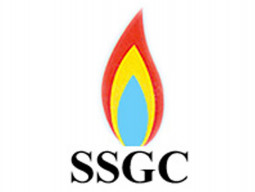
ISLAMABAD:
The Ministry of Petroleum and Natural Resources has suggested that Tuwairqi Steel should give up 5% equity in the mill in favour of Sui Southern Gas Company (SSGC) for gas supply at a concessionary rate.
“The petroleum ministry, in a meeting of a sub-committee of the Economic Coordination Committee (ECC), proposed that Tuwairqi Steel Mills should give 5% equity stake to SSGC against supply of cheaper gas,” an official said. “Talks are still going on and nothing has been finalised yet.”
The petroleum ministry said the financial impact on SSGC of the lower tariff, estimated at Rs123 per million British thermal units (mmbtu), would be about Rs5 billion, requiring a 3.3% increase in gas prices for all consumers, excluding domestic and fertiliser sectors.
Earlier, the ECC, in a meeting held on July 17, had put off a decision on provision of feedstock gas to Tuwairqi Steel at a discount, a plan, if approved, could cause a revenue loss of billions of rupees to the national coffers and lead to an increase in consumer gas prices.
The committee called for constituting a body to discuss all issues and submit recommendations for its consideration. The sub-committee would come up with the proposals by August 15, it said.
Talking to The Express Tribune, Tuwairqi Steel country head Zaigham Adil Rizvi remarked, “we are ready to do everything for the sake of the country.”
Tuwairqi Steel is a joint venture between Saudi Arabia’s Al-Tuwairqi Group of Companies and South Korea’s Pohang Steel (Posco). They have planned to set up Pakistan’s largest steel complex with a capacity of 1.28 million tons per annum.
The mill’s management has clearly conveyed to the government that they will pull out of Pakistan if they are not offered gas at a cheaper price. They are seeking incentives for the next five years in an effort to pay back their loans.
The management stresses that the government is bound to provide gas at a lower price according to an agreement. The mill has already suffered losses of millions of dollars because of the closure of Direct Reduction of Iron (DRI) plant for the last 10 months.
However, the Finance Division and Ministry of Petroleum countered that the government had no legal obligation to provide gas at a reduced tariff, which would cause an annual revenue loss of about Rs5 billion.
The Ministry of Industries, on the other hand, was backing the steel mill in its demand for cheaper gas supplies for running the DRI plant.
Though the mill was seeking a support of Rs4 to Rs5 billion per annum, the DRI plant would contribute to the country an estimated Rs12 billion annually, the ministry said. Apart from this, foreign investment worth Rs89 billion would be made in forward and backward linkages of the DRI plant.
After establishing the linkages, the ministry said, the mill would contribute Rs100 billion annually to the economy in import substitution.
The project is being developed in three phases including a DRI plant, melting shop for flat and long steel products and mechanised mining of iron ore in Pakistan as forward and backward integration.
The mill was set up at Bin Qasim Karachi over an area of 220 acres after signing of a memorandum of understanding (MoU) with Pakistan on May 28, 2004.
Phase-I of the DRI plant has been completed with an investment of $340 million while capital injection in phase-II and III is estimated to be in the range of $850 to $900 million. This, however, has been linked with commercial success of the DRI plant.
In the MoU, the government gave an undertaking that 40 million cubic feet of gas per day (mmcfd) will be provided as feedstock and 30 mmcfd as fuel. Tariffs would be the same as applied to other industrial consumers.
The mill claimed that gas utilisation in the DRI phase was one of the most efficient at about 85%, meaning a loss of only 15%. The efficiency was better than that achieved by fertiliser and other sectors where natural gas was widely used.
Published in The Express Tribune, September 7th, 2014.
Like Business on Facebook, follow @TribuneBiz on Twitter to stay informed and join in the conversation.



































































COMMENTS
Comments are moderated and generally will be posted if they are on-topic and not abusive.
For more information, please see our Comments FAQ